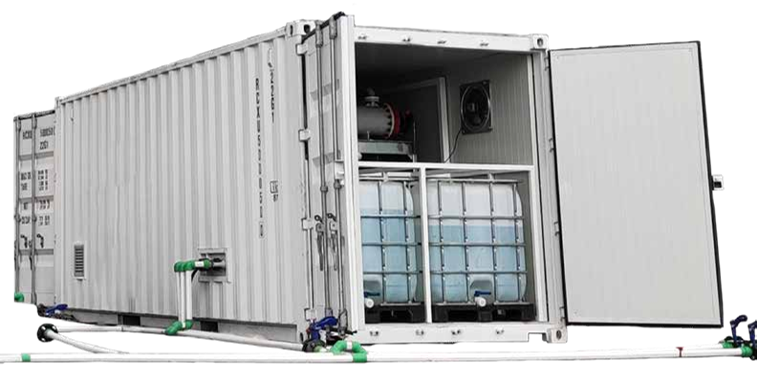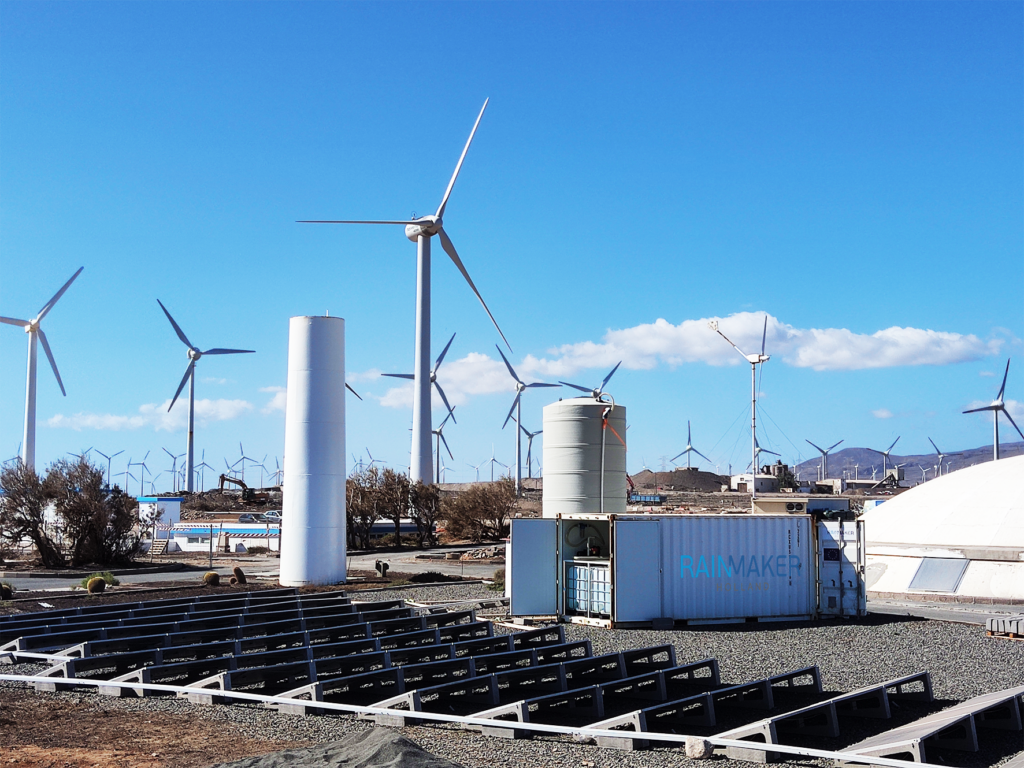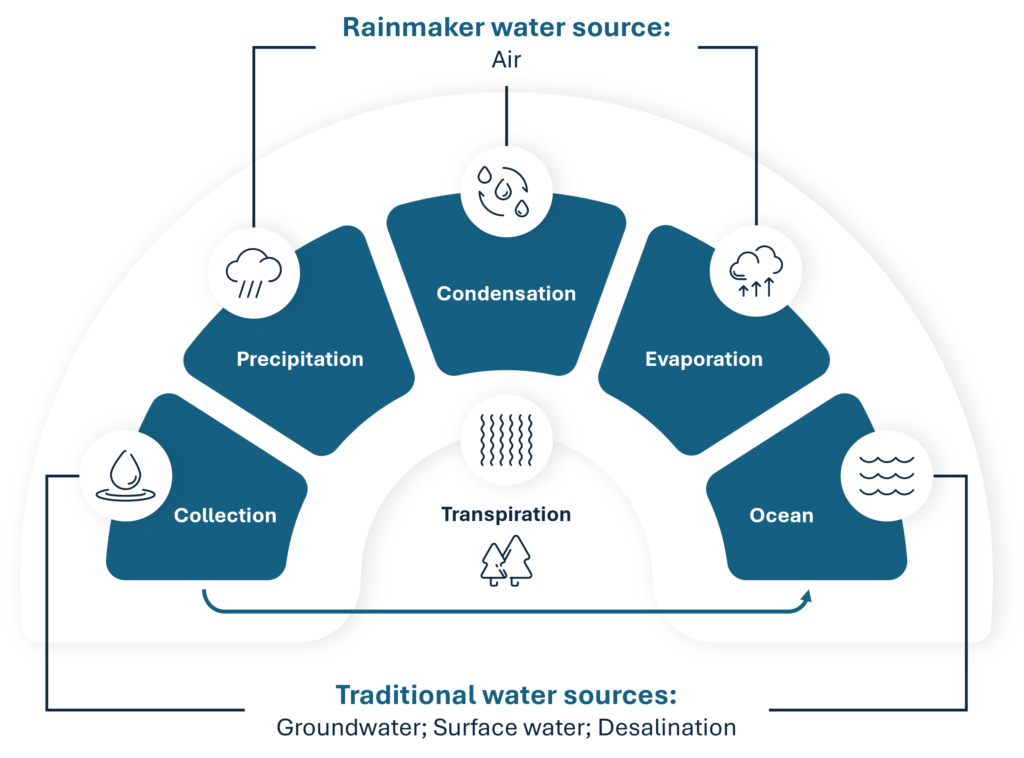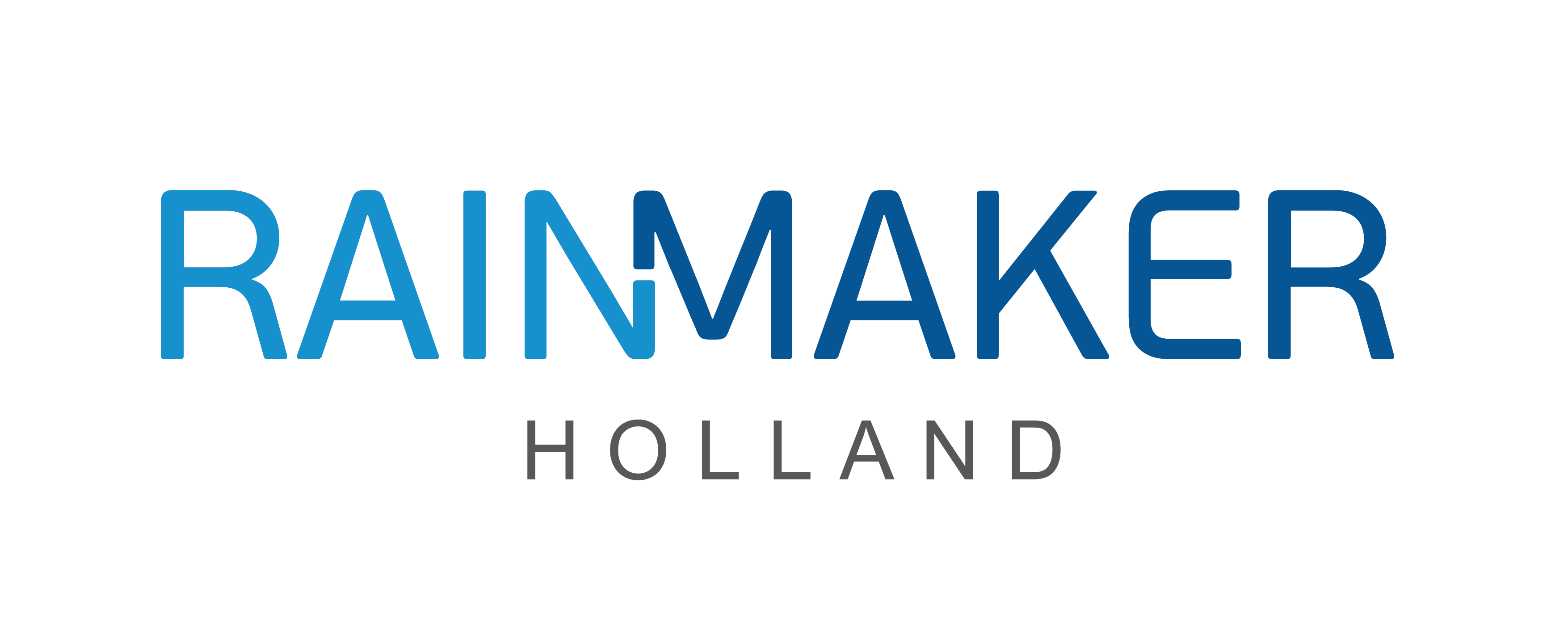Tap Water from the Sea,
or from other Non-Drinkable Water Sources
Drinking water, affordable, energy-efficient, easy to deploy.
How does our Water-to-Water-technology work?

Using a membrane distillation process, water is evaporated under low pressure through a heat pump condensation process. The vapor produced by heating the water then passes through the membrane.
Unlike reverse osmosis, where water with dissolved salts and other solids is forced through the membrane, this membrane only allows water vapor to pass through.
The pores in this membrane are larger than the pores in reverse osmosis membranes, so less pressure, and thus less energy is required.
Water-to-Water features:
- Produces drinking water from seawater, brackish, or contaminated water
- Up to 37,500 liters of drinking water per day per machine
- For large-scale installations, multiple units can be combined
- Very energy-efficient
- Choice of power sources: wind, solar, grid, generator, or hybrid combinations

Where and when is the Water-to-Water technology applicable?
- for communities with insufficient or no access to freshwater, and close by a big enough supply of seawater or contaminated water.
- for companies looking for energy-efficient technologies to clean and potentially reuse waste-water.
- for cities and regional administrations that want to restore rivers, lakes, and harbors.


Endorsed by the EU
The Water-to-Water (W2W) project has received funding from the European Union’s Horizon 2020 research and innovation program under grant agreement No 873854. You can find more information on the website of the European Union.
The Water-to-Water unit can be powered by various power sources, including a wind turbine. Check this video to discover the technology used.
